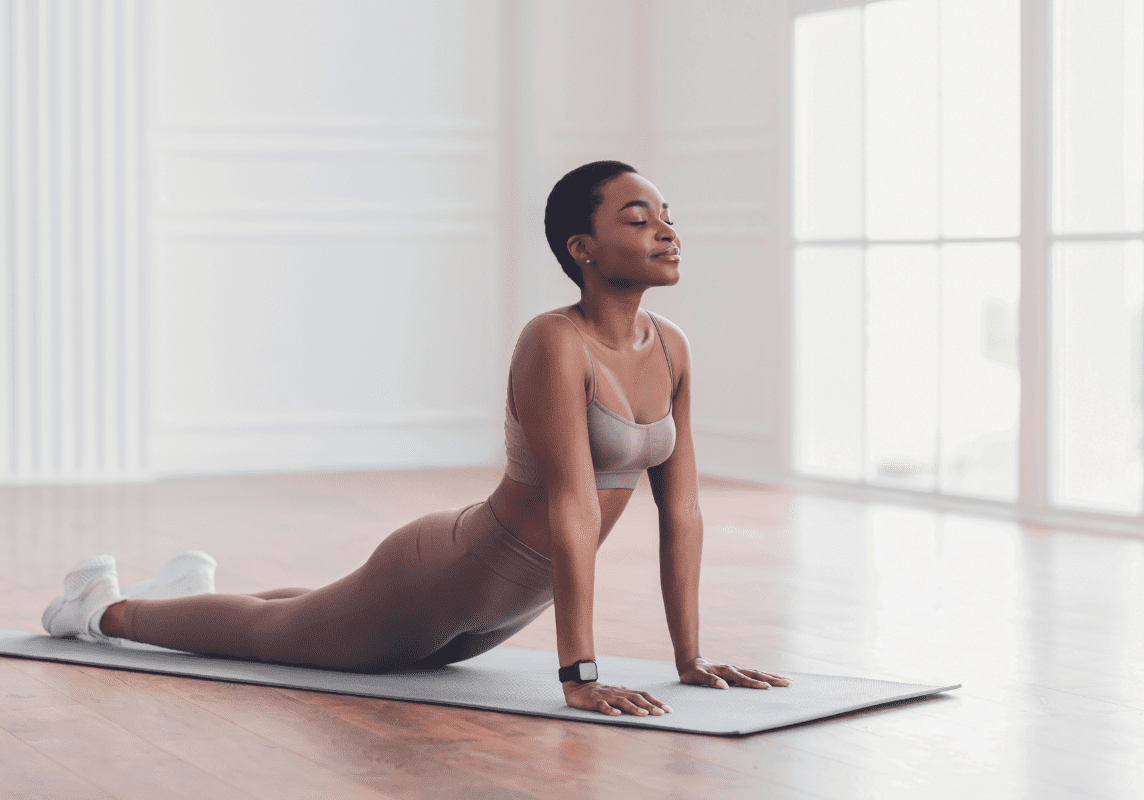
Ignorance is not bliss
When it comes to anatomy and physiology in yoga teaching, ignorance is definitely not bliss.
By Caz Hitchcock
Ignorance is not yoga bliss. As a teacher for over 15 years now, I am constantly surprised that little has changed in yoga teacher training courses that cover the yoga sutras and some standard anatomy biomechanics training.
Does this sound in any way familiar? "When studying for my teaching diploma, we were instructed to draw a box with all the postures down one side and common ailments down the other; if your student had any of these [ailments], we were taught to either modify the pose slightly or just tell them to sit it out. It's not an approach that feels inclusive for the student, and it makes yoga movement inaccessible for many."
The issue with this is that the yoga movements taught are not suited to a modern mid-life body, one with an often sedentary lifestyle...which, right now, is perhaps one of the largest demographics of clients coming through the doors of yoga classes across the UK.
Preventable injuries
As movement educators, our clients entrust us with their bodies. Yes, there is an element of personal responsibility, but simply cueing students to 'listen to their bodies' and 'stop when it doesn't feel right' isn't enough.
Injuries caused whilst participating in yoga classes is rife – and not just by class attendees, but in teachers too.
One Finnish study following an estimated 300 practitioners concluded that after one thousand hours of practice, some 62% of those surveyed had suffered one or more musculoskeletal injuries that lasted over one month. The three most common injury locations were hamstring, knee, and lower back.
The repetitive movements of yoga asana are taking their toll on the teachers as well. Everything from hip replacements to sheared sacroiliac joints affects yoga practitioners as young as 35 and 40. Repetitive movement of any kind, whether that's typing at the computer or demonstrating yoga poses without care and attention, can result in an injury.

Some yoga teachers are now addressing their ignorance. A growing number are choosing to get themselves more informed on anatomy and physiology, particularly in the cutting-edge field of fascia and connective tissue. However, there are still large numbers of teachers trained in a 'cookie-cutter' approach to postures that are not sympathetic to the individual nature of our bodies.
My journey away from ignorance
On a personal note, I came to yoga nearly 25 years ago following multiple abdominal surgeries for a kidney condition, and I was suffering from a lack of core strength.
There was a distinct lack of support from the health services at that time for post-surgery rehabilitation, and I was told that exercises like yoga or pilates would be a big help for me.
Whilst initially sun salutations and the primary series took me so far, it wasn't long before it became apparent that my teacher's advice – your body will rebalance itself through the postures – wasn't coming true.
As well as tearing my scar tissue regularly, I suffered from raging tennis elbow and was well on my way to a frozen shoulder. Something was severely out of alignment, but neither my body nor my brain could figure out what to do about it. So I simply worked my way through the movements firing the best compensatory muscles I could, which caused further issues and unnecessary strain on other joints.
Repositioning myself out of necessity
I took myself in a very different direction after meeting a Scaravelli-inspired yoga teacher who only worked 1:1 and took me on a long road to reconnecting with my body, breath and yoga postures.
It was slow, deep work – but it worked. I started to understand and see the habitual movement patterns my body had laid down to keep me upright and moving. But I had become ill and had to navigate recovery. I experienced three rounds of surgery on my right side, which saved my life but left me bed-bound for the best part of a year.
By this time, I was already working with clients with complex movement issues and rehabilitation needs. It was part of my development as a teacher to study in-depth anatomy in movement and fascia research and I eventually ended up in the dissection lab working with soft tissue form.
We worked down through the layers of fascia and muscle, moving the body around and taking note of what moved freely and what was restricted and where.
Niching saved my yoga business
This knowledge enabled me to understand what was happening underneath my hands when I adjusted clients and to see the cause of restrictions in students' bodies when they moved.
Dissection also made me understand that the old training of repeating movements over and over until the body gives up and conforms to the shape imposed (or not, when injuries occur) was defunct and not serving my clients.
There is a discovered freedom when you step away from conforming to the old teaching style. You can tailor movements to the individuals in front of you. This lateral approach can be applied to all yoga postures which makes them inclusive and accessible, inclusive of age, experience or history.
For me, yoga became personal. Far from performing sequence of shapes with 20 others in a room, I became respected as my unique self with my unique history – and it is a joy to share this with my clients and students.
At the end of the day, it's what all humans truly want: to be seen, heard and understood, particularly when they've been through a traumatic experience.
Making it personal
Something I had not foreseen in changing my approach to teaching was that it would make me stand out from the crowd. There is a yoga class in pretty much every school, village hall, and gym in the country. And it can feel like a pipe dream to build your yoga business into a viable full-time income without trading all your evenings and weekends, or teaching back-to-back sessions for six hours a day. Which, let's face it, isn't sustainable for long!
It turns out niching down your yoga offering to attract a particularly type of client isn't a bad idea if you're serious about making your passion your profession. With more and more people turning to yoga (and even being advised by doctors to attend classes) as an aid for mild to moderate low back pain and other common ailments, for instance, it can make a lot of sense. It's also worth it given that students tend to vote with their feet and will rarely provide feedback to the teacher as to why they chose not to return to class.
Ultimately, client retention and safety are the teacher's responsibility. That means it's crucial that we all continue to develop our skill set and knowledge throughout our teaching career, long after the initial yoga teaching diploma.
Caz Hitchcock is a body movement and posture specialist who provides fascia-informed courses to educate teachers on the cause and effect of joint issues, how to identify and correct faulty movement patterns and work with students with injuries, so they feel confident and knowledgeable enough to help almost any person who walks through their class door. Visit: gravitytechnique.com




